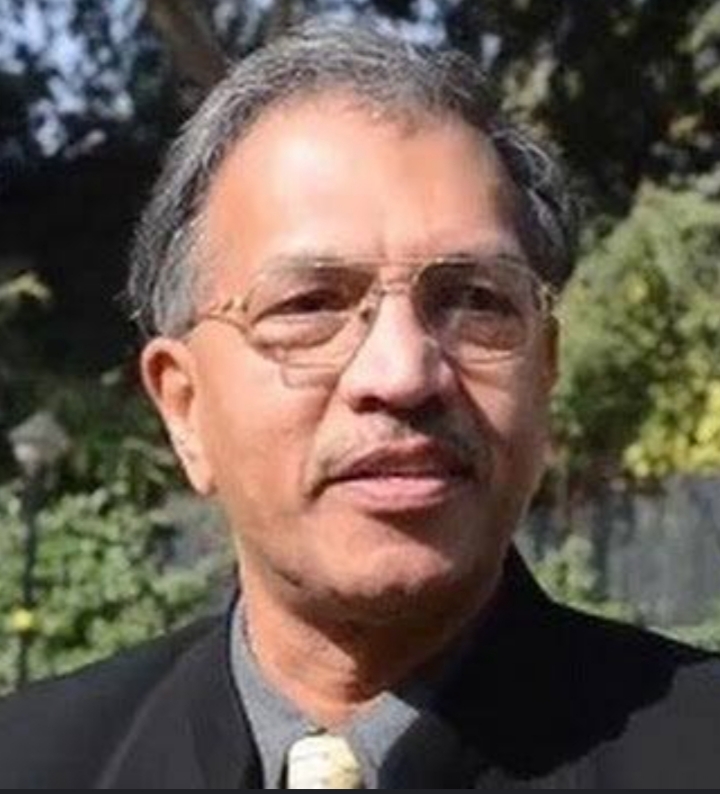 Dr. A. K. Merchant*
Dr. A. K. Merchant*
IN a country that reveres the Guru-Sishya Parampara the teacher-competency and their role in shaping the minds and hearts of children and youth for an Atma-nirbhar (self-reliant) and Viksit (developed) India is most crucial. United Nations World Teachers’ Day, is observed annually on 5th October. In India the National Teachers Day is observed on 5th September coinciding with the birth anniversary of our philosopher-president, Dr. S. Radhakrishnan. More than 100 countries commemorate World Teachers’ Day and each country holds its own celebrations some on separate days but all are fully alive to importance of the teaching profession and their services. The occasion helps us to reflect on this noblest of all professions and to pay tribute to the educators around the world. It is a time to recognize the dedication, creativity and resilience teachers bring to classrooms, often under challenging circumstances.
The roots of World Teachers’ Day trace back to the 1966 UNESCO and International Labour Organization “recommendation” concerning the Status of Teachers. This landmark instrument outlined the rights and responsibilities of the teaching profession. In 1994, UNESCO officially designated 5th October as World Teachers’ Day, marking the anniversary of that Recommendation. Since then, the day has grown into a global celebration, featuring conferences, policy debates and cultural events that highlight both achievements and ongoing challenges in education.
A unique theme to focus international attention on pressing educational issues is announced that range from “Valuing Teachers” to “The Transformation of Education.” Schools and institutions host seminars, recognize outstanding educators and share best practices. Social media campaigns amplify teachers’ stories, while governments may announce new initiatives or funding to improve working conditions and professional development opportunities and recognize the meritorious services by presenting best teacher awards.
The theme for 2025 is: “The transformation of education begins with teachers”. It may be recalled that during the testing times of Covid-19 pandemic schools, colleges, and universities remained closed and all the people were depressed and scared. However, it could not destabilize the dedication and courage of teachers. Teachers knew that there would be no physical classes during the pandemic so they transformed their medium of education altogether. Students and teachers stayed home and yet education never took a pause. Further, with the help of teachers, schools created a mechanism using technology, notably smart phones, to ensure minimal educational loss of the children during those two-and-half years.
And yet, today in the midst of profound confusion caused by the turmoil among the comity of nations, it is evident that the mode of education has changed from conventional teaching to technical, skills-development, professional and virtual education. This is the flip side to the past tradition because teaching is not an easy profession in the 21st Century. There was a time when teachers were highly respected, valued, and even served as role models for young people. Present-day societies, tend to glorify celebrities, like artists, and sportsmen than outstanding teachers, therefore, without doubt, there are considerable challenges to the status of the teaching profession worldwide. Particularly, in India, inadequate teacher training, numerous teaching vacancies, and high absenteeism affect education quality. Underdeveloped Indian languages and lack of standard text books hinder teaching in mother-tongue, especially in rural areas, as mandated by National Education Policy 2020. In certain western countries while there are plentiful resources yet violence in schools and promiscuity are quite rampant. Even families no longer support the teacher’s authority over their students in the classroom. Teachers can face threats from their students and their family members.
The central concern in relation between education and the forces of disintegration that continuously assault global society is not a failure of education per se, but rather, the inability of the educators and curriculum developers to keep pace with, or even lead, the process of transformation to a new Age, towards a holistic perspective of where the world is headed. For, the children of today are the protagonists who will shape the societies of the future.
For members of the Bahá’i Faith: “The greatest danger of both the moral crises and the inequities associated with globalization in its current form is an entrenched philosophical attitude that seeks to justify and excuse the failures of state policies and programmes. The overthrew of the 20th century’s totalitarian systems has not meant the end of ideology. On the contrary, there has not been a society in the history of the world, no matter how pragmatic, experimentalist and multi-form it may have been, that did not derive its thrust from some foundational interpretation of reality. Materialism and consumerism under the nominal designation ‘Western civilization’, have penetrated every strata of society and every department of human activity, most particularly the families and schools.”
To counter such a distorted worldview UNESCO had presented a curriculum framework on education for the 21st century titled: “Learning—The Treasure Within” anchored upon four pillars: (i) Learning to know; (ii) Learning to do; (iii) Learning to live together; (iv) Learning to be. This was supplemented by another document titled: “Education of Futures—Conservation & Change” to address the widespread ecological crises. Had the governments and other policy-making institutions, both public and private, given due consideration it would become quite obvious that achieving a dynamic coherence between material and spiritual elements of life implies a worldview radically different from whatever comprises the present-day socio-political and economic structures. There is urgent need for far-reaching spiritual and cultural shifts at all levels of global polity. New modes of thought, new standards and new legal and institutional arrangements are struggling to take hold. Both parents and teachers have the greatest responsibility.
While parents are hard-pressed to give quality time to their children, teachers, especially those living societies with high density populations, are challenged by the pupil-teacher ratio (PTR). In 2019, there were about 93.7 million teachers worldwide: 11.6 million in pre-primary; 32.6 million in primary; 20.7 in lower secondary; 15.7 in upper secondary; and 13.1 in tertiary education. The average for 2018 based on 86 countries was 24.26 students per teacher. The highest value was in Rwanda: 59.51 students per teacher and the lowest value was in San Marino: 6.93 students per teacher.
India now has more than one crore school teachers for the first time ever, according to the Education Ministry’s Unified District Information System for Education Plus (UDISE+) 2024-25 report. The UDISE Plus is a data aggregation platform maintained by the education ministry to collate school education data from across the country. The total number of teachers has risen to 1.01 crore from 98 lakh last year and 94.8 lakh in 2022-23. The Ministry described this growth as a “significant achievement in the history of school education,” pointing out that it directly strengthens the student-teacher ratio and helps address regional imbalances in teacher availability.
The Pupil-Teacher Ratio (PTR) in India now stands at 10 at the foundational level (pre-primary to Class 2), 13 at preparatory (Class 3 to Class 5), 17 at middle (Class 6 to Class 8) and 21 at secondary (Class 9 to Class 12)-all well below the National Education Policy’s recommended 30:1 ratio. The lower the PTR, the better the student-teacher interactions. This, officials said, allows for “more individualized attention and stronger teacher-student interaction,” leading to better learning outcomes. The number of female teachers is also significantly more than that of male teachers as compared to 2014. Since 2014, 51.36 lakh teachers have been recruited, of which 61 per cent are female. Currently, there are 54.81 lakh female teachers in comparison to 46.41 male teachers.
United Nations Agenda 2030—Sustainable Development Goal number 4 is the education goal that aims to “Ensure inclusive and equitable quality education and promote lifelong learning opportunities for all.” It is made up of ten targets, which for want of space cannot be elaborated here. Economic Survey 2024-2025 of India highlights that the school education system in the country serves 24.8 crore students across 14.72 lakh schools with 98 lakh teachers. Government schools comprises 69 % of the total, enrolling 50 % of students and employing 51 % of teachers, while private schools account for 22.5 %, enrolling 32.6 % of students and employing 38 % of teachers.
The Survey notes that National Education Policy (NEP) 2020 aims for a 100 % Gross Enrolment Ratio (GER) by 2030. The GER is near universal at the primary (93 %) and the efforts are underway to bridge the gaps at the secondary (77.4 %) and higher secondary level (56.2 %), driving the nation closer to its vision of inclusive and equitable education for all. The Government has been striving to achieve the objectives of NEP 2020 through a range of programmes and schemes, including the Samagra Shiksha Abhiyan (along with its sub-schemes such as NISHTHA, Vidya Pravesh, District Institutes of Education and Training (DIETs), Kasturba Gandhi Balika Vidyalaya (KGBV), etc., DIKSHA, STARS, PARAKH, PM SHRI, ULLAS, and PM POSHAN, among others.
Of all the activities of the followers of the Bahá’i Faith the most important is the education of children, capacity building of youth and encouragement for life-long learning to all adults, both women and men. Bahá’i Writings beautifully describe the role of the teacher, the noblest of all professions: “Be thou a teacher of love, in a school of unity. Train thou the children… in the rules and ways of God’s loving-kindness. Tend the young trees…with the welling waters of His grace and peace and joy. Make them flourish under the downpour of His bounty. Strive with all thy powers that the children may stand out and grow fresh, delicate, and sweet, like the ideal trees in the gardens of Heaven.” A teacher should be a learner. By remaining in the learning mode, the teacher keeps pace with contemporary times and is protected from the false sense of pride in one’s knowledge and skills. As the theme for 2025 proclaims—“The transformation of education begins with teachers”—it is clear that “mothers” who are the primary teachers of all human being compliment the school teachers and jointly responsible for transformation of our sorely afflicted planet. Empowering them through respect, resources and recognition is the key to shaping resilient, equitable and visionary societies of tomorrow.
*The writer is a social worker, independent researcher & member of the Bahá’i Community of India. Views expressed are personal


